Skulpturen föreställer en hopkrupen mansfigur, inplacerad eller instängd i ett trångt och lågt, burliknande utrymme. Utrymmet kan beskrivas som ett ett övre, relativt tunt och platt parti som tjänstgör som ett slags tak samt ett undre parti som utgör golv. Väggar saknas. "Tak" och "golv" är inte parallella med varandra utan "taket" är riktat snett uppåt mot skulpturens främre ända. Detta ger skulpturen en kilformig profil.
"Taket" och "golvet" har en romboidformad plan och förbinds med varandra genom fyra ornerade stöttor som tycks bära upp "taket".
I bakre ändan är stöttan ersatt av en stor dubbelsidig ros, placerad i skulpturens längdriktning.
Mannen ligger på knä och vilar framkroppen på de böjda armarna. Han är placerad på ett sådant sätt att han tittar ut genom en, på höjden, rektangulär "glugg" som bildats av de två stöttor som förbinder den ena av "golvets" och "takets" bägge kortsidor.
Stöttorna, av vilka den yttre är delvist bortbruten, vilar nedtill på ett snett placerat och välvt bröstvärn eller dylikt. Detta är beläget framför mannen och prytt med en stor ros och ritsade spiraler.
Mannen ryms med nöd och näppe i det trånga utrymmet. Han måste ha både knän och armar utanför stöttorna som uppenbarligen trycker hårt mot hans kropp.
Han har ett grovt, fyrkantigt ansikte med håret neddraget i pannan, klumpig näsa och stora, långsträckta mustascher men saknar skägg.
Han är iförd en "civil" dräkt, en långärmad, rikt veckad klädnad som troligen når ned till strax nedanför knäna. På fötterna har han kängliknande skor.
Skulpturen är snidad runt om och kan studeras från alla fyra sidor. Genom den romboidformade grundplanen har skulpturen fyra sidor, förutom över- och undersida. Den ena långsidan och kortsidan svarar mot vänstra sidan av mannens kropp respektive ansiktet och bröstvärn- skulpturens framsida. Den andra långsidan och kortsidan svarar mot mannens bakhuvud och högra sida av bålen, respektive ben och fötter- skulpturens baksida.
Mannens huvud är vridet något åt vänster i förhållande till övriga kroppen och blicken är riktad snett ut åt sidan.
Skulpturen är framställd i två delar med övre delen, motsvarande "taket", översta delen av stöttorna samt mannens panna och ögonbryn, snidat separat. Som nämnts har överdelen, efter det att skulpturen färdigställts, aldrig varit skild från det större, undre partiet.
Konstnären har från början gjort "taket" för kort och dessutom framställt mannens huvud som rundskulptur- kanske föranlett av att han haft oklara begrepp om var och/eller hur skulpturen skulle sitta på skeppet- varefter han måst skarva genom att till det ursprungliga stycket foga ett långsmalt stycke som nu utgör "takets" framkant.
Skulpturen är mycket välbevarad så när som på att den stöttan framtill delvis är avbruten och den dubbelsidiga rosen baktill fragmentarisk.
Skulpturkategori bestående av två skulpturer.
Skulpturerna är utförda efter samma schema och är spegelvända i förhållande till varandra.
Skulpturerna är närmast kilformiga i sin konstruktion med största höjd vid figurernas huvudända. Grundplanen är romboidformad. Skulpturerna har två parallella långsidor samt två mot dessa snedställda kortsidor. Skulpturerna är skulpterade runt om. Endast över- och undersida, som har utgjort anliggningsytor, är släta och plana.
Skulpturerna bör följdaktligen varit fästade upptill och nedtill.
Skulpturerna är snidade i två delar stycka utan den övre respektive den undre delen har snidats separat varefter de spikats ihop.
Mycket välbevarade om än vissa smärre partier saknas och även ett lättare slitage kan konstateras.
Text in English: This is a sculpture of a crouching male figure placed in an extremely confined, low, cage-like space. Viewed from the side, the "cage" is wedge-shaped, rising at the front, and has four ornamented supports for bars. At the very back of the sculpture, linking the figure''''s feet with the top of the cage is a double-sided rose.
The figure is on his knees and, bending forward, rests on his right arm and left hand. He is so placed that he peers out through a rectangular aperture formed by the two front supports. Underneath the aperture there is a carved panel bearing a rose and spirals.
The man scarcely fits into the cramped space, he is confined by the supports and his arms and knees stick out. The man''''s face is square and heavy, he has a big nose and an elongated moustache. His chin is clean-shaven, and his hair falls over his forehead. He is in civilian garb, a long-sleeved pleated garment that seemingly reaches to just below his knees and on his feet he wears some kind of boots.
The sculpture was made in two unequal parts, the division being horizontal and occurring just above the figure''''s eyebrows. The sculpture is carved in the round and can be studied from all sides.
The sculpture is very well preserved. Part of the front bar on the figure''''s right is missing and a replica has been fitted.

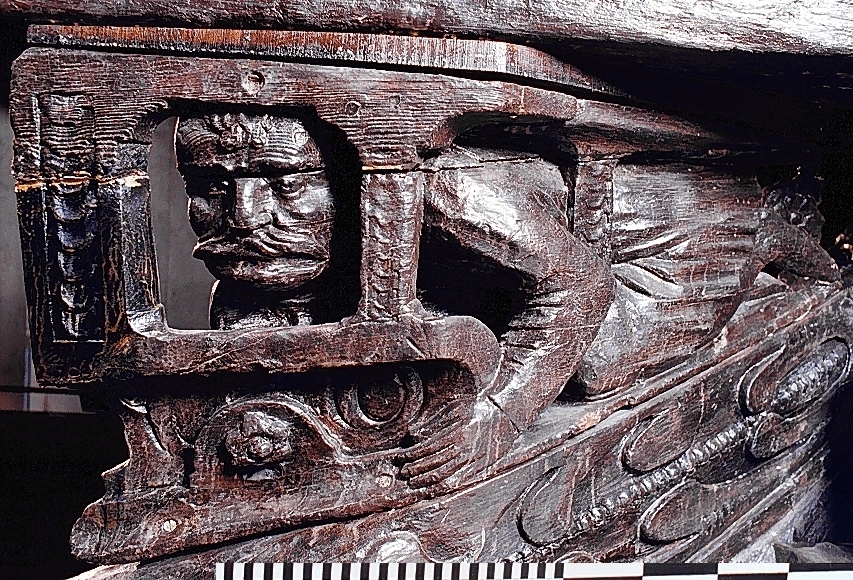

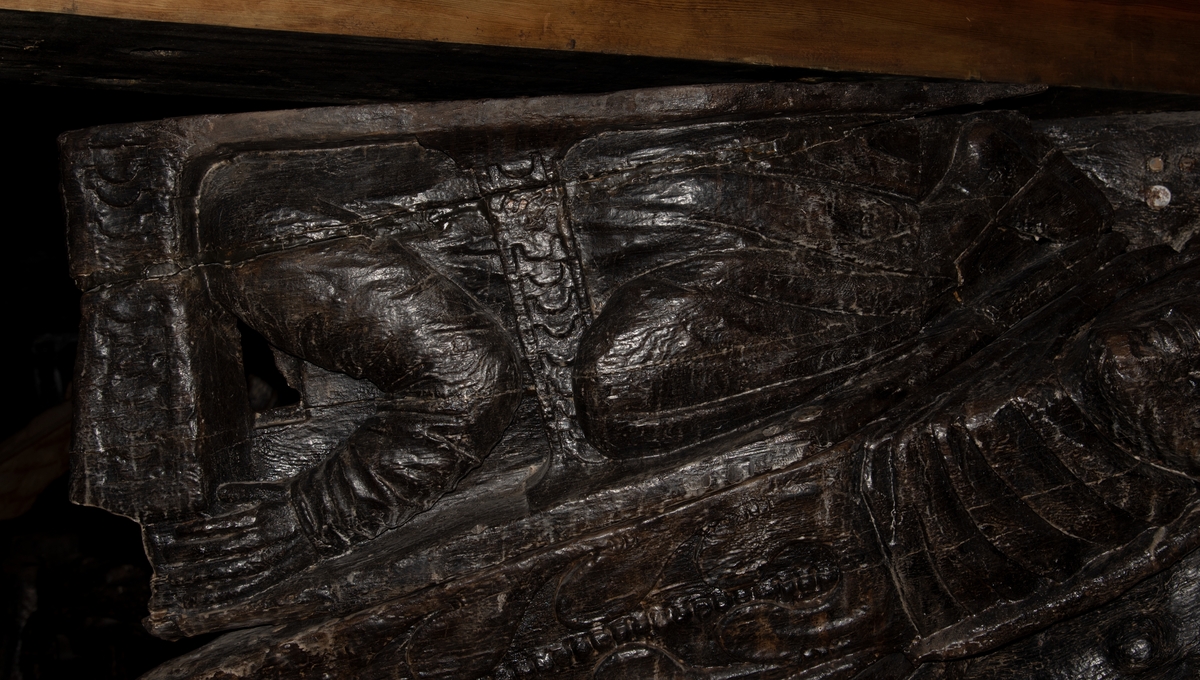
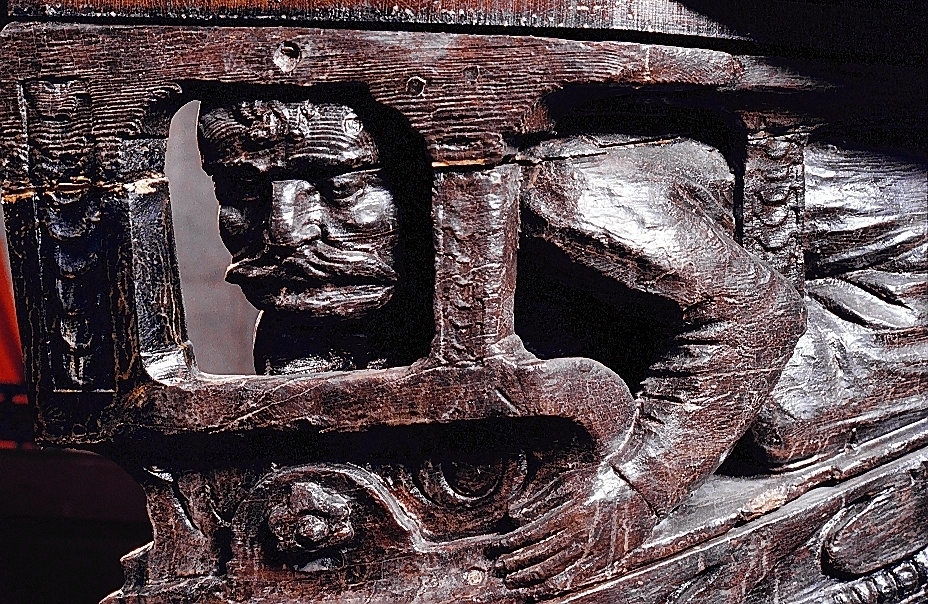
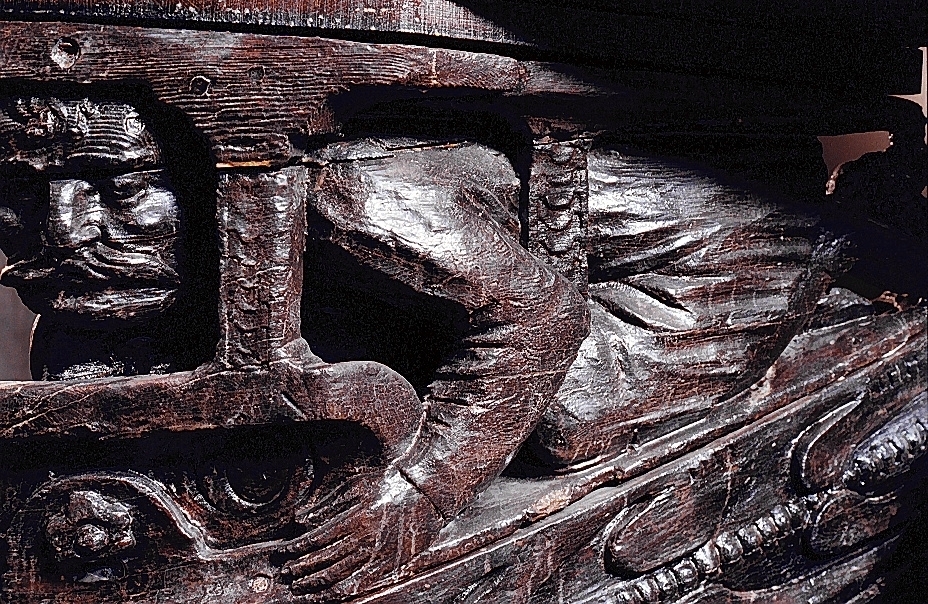
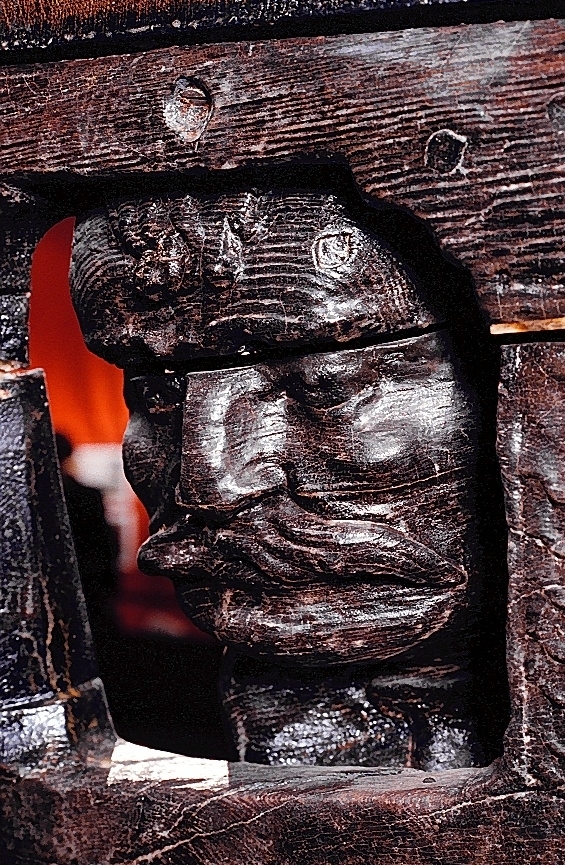
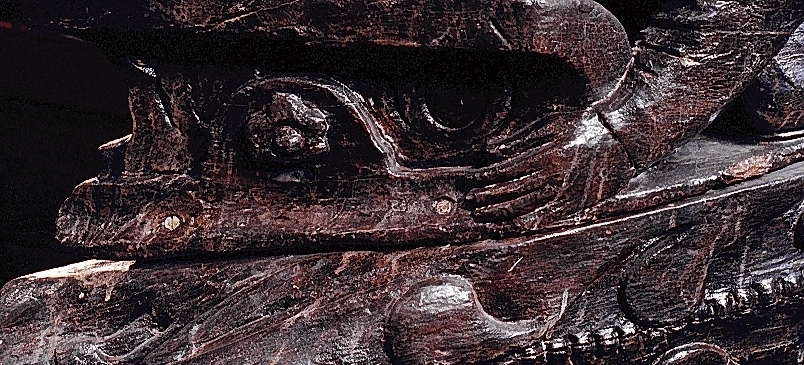
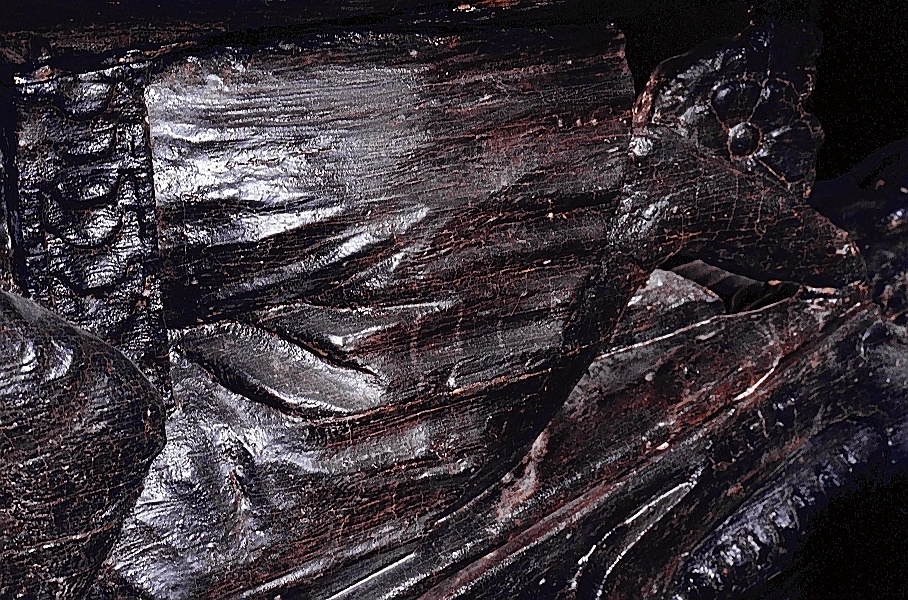
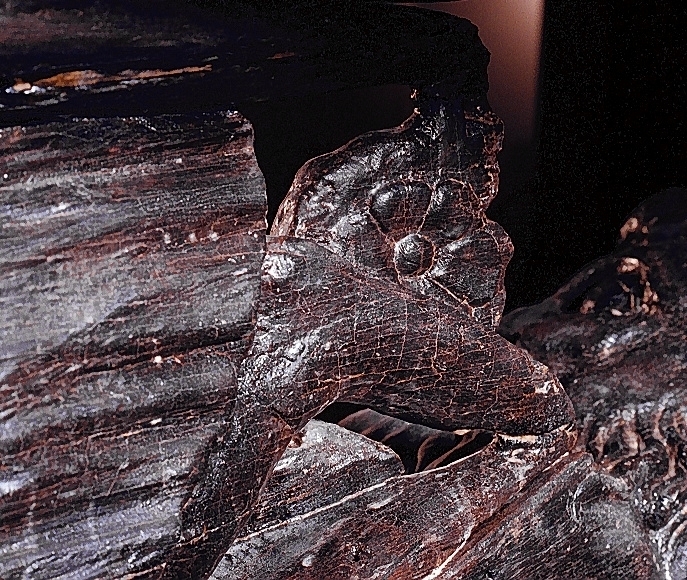
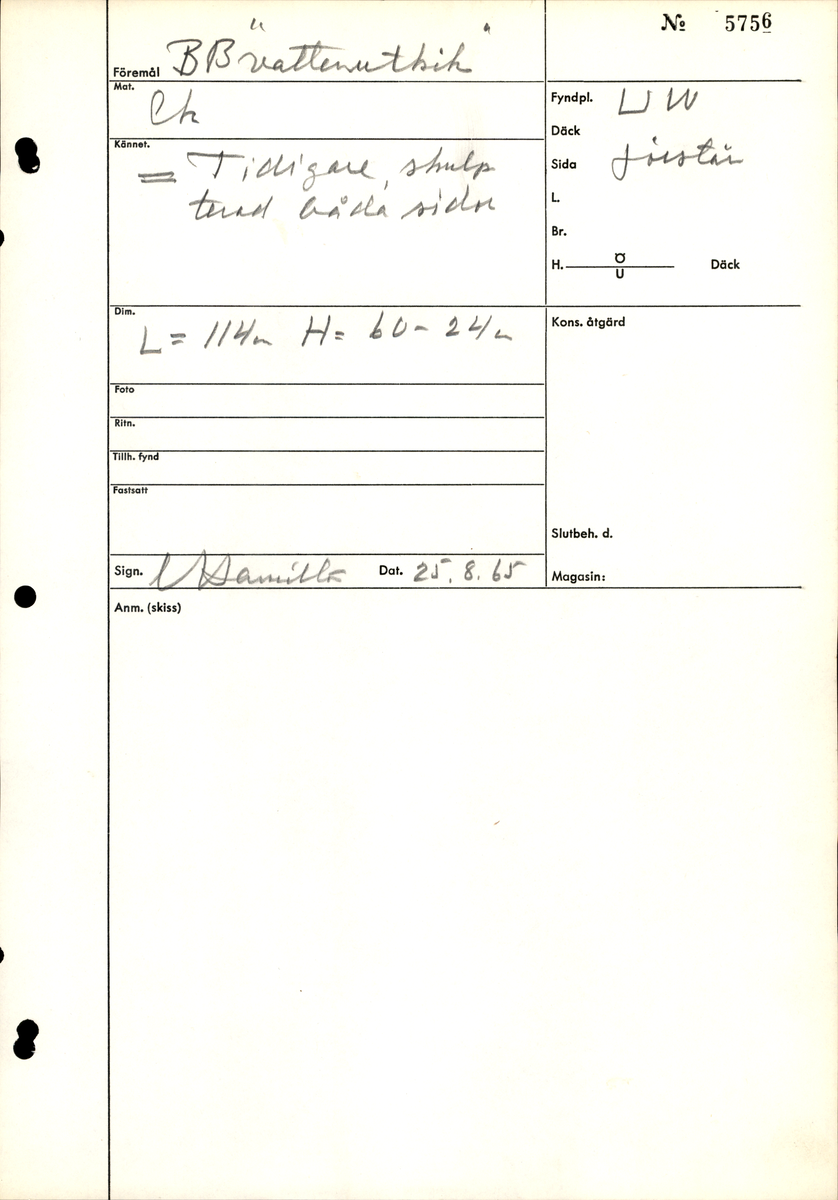
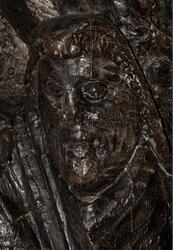
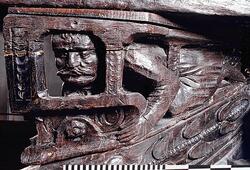

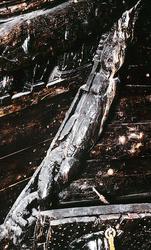

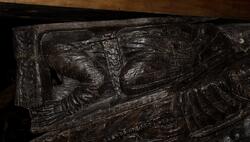
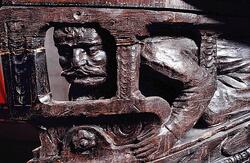
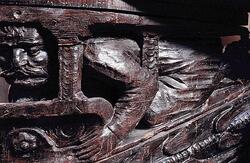
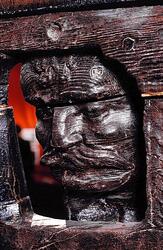
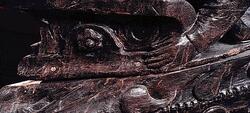

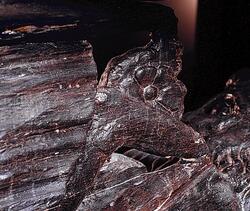
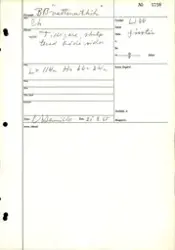
Add a comment or suggest edits
To publish a public comment on the object, select «Leave a comment». To send an inquiry directly to the museum, select «Send an inquiry».